Clues and Clarity – Pearls and Diamonds
“The sea is a domain increasingly beyond government control, vast and wild, where laws of nations mean little” – William Langewiesche
The fact that we live on land and most, beyond the sight of the sea, we forget that the world is an ocean. In practice, we ignore what it means. Its vastness, size and depth hides many things without trace. It cannot be tamed - as the sun goes down beyond the horizon, the greatest defining feature, goes beyond our mind. Thus, the saga of X Press Pearl may sometimes leave behind, only footprints in the sands of time.
Over the weeks, we saw a debate on the accident of X Press Pearl being discussed on print and electronic media. Claims and counter claims were being made. Believe me, a graph on instagram showed that the PiyumiHansamali saga takes more prominence than X Press Pearl. Disappointingly, not many experts, specialists and professionals came on board to make the public aware of the issue.
Preamble
MT New Diamond, 03 September 2020 – A large oil tanker with a DWT of 299,000 with a length of 330m caught fire 65nms off the Eastern coast of the country. There was one casualty. As per Wikipedia, the Master was charged for causing an oil spill and violating the Marine Environment Protection Authority Act and a fineof one millionUSD was sought. The court reduced it to 65,000 USD. The ship owner was charged 2.4 million USD for the firefighting effort.
MV Express Pearl, 19 May 2021 – Container vessel with a DWT of 37,000, much smaller than the former, with a length of 186m caught fire 9nms off the Colombo Port while at anchorage. Briefly, it had 1,486 containers which included about 25tons of Nitric acid, may be one 20ft container, cosmetics probably which had alcohol and other poisonous chemicals. Possibly about 300t of fuel.
Following the accident, amidst the mitigation and the ongoing salvage effort, the CID commenced questioning the Captain and some members of the crew on Monday the 31st of May. The initial investigation was completed on the 01st of June 2021. The debacle itself has many aspects to go into. A few of them are, safety, security, damage to cargo, damage to environment, salvage, pollution, fire hazard, legal implications, security and possibly many more. Apart from recording statements a criminal investigation probably focus on checking of basic records and logs, the Voyage Data Reorder (VDR), Satellite communications, compliance certification, possible forensic data, circumstantial evidence and much more. These are normally done with naval, navigational, surveying, engineering and other experts too. Getting access to the experts and the data are equally important as much as the crew. In the meantime, it was reported that the VDR was taken into custody on 05th June 2021. Whether the VDR is conclusive, is not established.
Ship in Distress
It is proven beyond doubt that the ship had not reported that it was not in distress. The agent requested for Clearance from port control stating “all good”. There were various contradictory views being expressed by various quarters, on how the ship came to anchor. All this was put to rest by the Chairman SLPA General (retired) DayaRatnayake when he told the Country that the vessel had not declared it had leaking Nitric acid (HNO3) before it came on anchorage. It is strange why the owners or agents didn’t do so. This leak had been observed for over ten days and attempts made to remedy the situation through ports in Hamad (Qatar) and Hazira (India) though not successful. All this will be recorded through the Global Maritime Distress Safety System (GMDSS) or any other preferred satellite communication system.
The Colombo Port is among the top 25 ports in the world and its scope, capability and importance is increasing by the day. As such, it will be called upon, always, to play a leading role in this region of the Indian Ocean, connecting the Malacca Straits and the Gulf of Aden and Gulf of Oman. While the former is the gateway to the far east the latter is to the Middle East and Europe. All considered choke points and strategically important. So, a ship in distress will always have Colombo as a possible source of assistance and solace. At present, it is estimated that around 200 to 300 ships pass the Dondra Head on a daily basis.
At the beginning, most who expressed views and opinions did not give a logical and accurate sequence of how the events unfolded. Information seemed to be heaving, rolling and pitching, like the ship itself. At this point, the public did not really know whether the ship was in distress. The owners/agent had informed the port control that there was a leak in one or more containers two hours after it was anchored. Well, it was a known fact both by the crew and the owners. There was no way the leak could have been detected whilst being loaded in Jebel Ali, when almost every 90 seconds a container is loaded on to a vessel. Thus, the reason why they wanted to sail to Hamad or Hazira when the leak was detected enroute. Both these ports were regular routine calls anyway, other than the emergency call. If State Port Control in Sri Lanka knew about the leak well before, they may have certainly resorted to a different course of action. They would have done that in consultation with port navigation and safety. Thereafter, possibly, made arrangements to survey the vessel before anchoring and took all control measures. Then the vessel would have entered the port, container unloaded and ‘reworked’. Knowledgeable specialists say that such an exercise was no big deal. All credit would have gone to Colombo for doing what two others could not.
Voyage route of X pressPearl
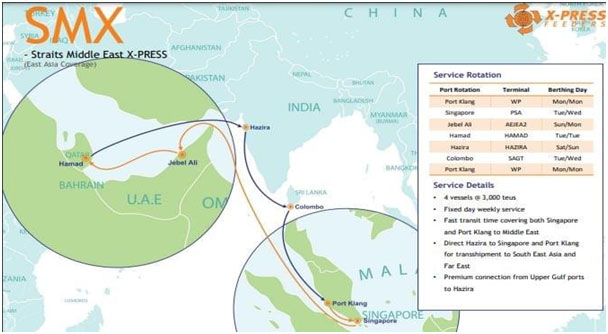
Container ship fires 2000-2019. Source: Everstream Analytics; publicly available information
World Accident Factsheet in Brief
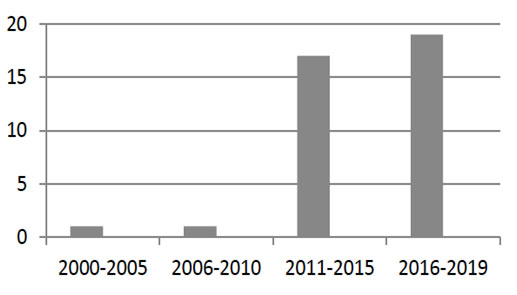
Early in 2019 two of the world’s largest container vessels caught fire (Yantian Express and APL Vancouver). Every 60 days a major fire occurs on a cargo vessel according to insurance companies. There have been 38 fires in container vessels since 2000. The key factors causing fires have been identified as, wrongly declared dangerous goods (DG), larger vessels and containerisation of seaborne cargo. That in brief, is the risk of supply chain activity. According to Allianz SE, a German insurance company, the impact of a fire, in a sensitive area could cause an impact of USD 2-4million in damages, liability, environment damage and salvage.
Dangerous goods (DG) are materials and items with hazardous properties which present a potential danger to their means of transport. The International Cargo Handling Coordination Association (ICHCA) estimates over a 5.4mn containers are packed every year as DG. The cargo is normally stored in the forward of a vessel so that the crew accommodation is least affected in case of an incident. The main causes of DG accidents are identified as incorrect packaging and labelling, insufficient firefighting equipment, delay in outside assistance and lack of safety culture.
In the light of Sri Lankas’s future stature as a maritime hub and with the growing power struggle in the Indo Pacific, emergence of the East and West Terminals, development of the South Terminal in the Colombo Port are all but indicators that Sri Lanka should have robust facilities and infrastructure in and around her. As always, when there is a need to have Sea Lines Of Communications (SLOCs) open for trade and commerce during peace time and closed during war is being competed and debated heavily,it cannot be less.Although I do not subscribe to the theory of Sri Lanka being a strategic location (any more), I am convinced that her location plays a pivotal role in maritime affairs, at least until other ports in the immediate region come to prominence. Thus, as a country, we will need to be geared up to meet the challenge. Our generation will learn costly lessons from Pearls and Diamonds, to protect our maritime interests. The next may stand to benefit, if we have a Comprehensive National Security Policy for Sri Lanka. To my understanding, even Chapter XVIII of the Constitution of Sri Lanka talks only about Public Security and nothing more.
The Vast and Wild Ocean
The amount of laws, statues, treaties, obligations, conventions, regulations, MOUs and the rest that govern the oceans looks as though there cannot be a single incident or threat in the sea. It is difficult to comprehend how a Master of a vessel can be mindful of all this, along with the crew. But, remember, the ocean is Vast and Wild. Very apt. So any detail investigation and inquiry, in addition to following the Criminal Procedure and the Penal Code, will be following even other local laws such as the Marine Pollution Prevention Act 36 of 2008 and the Admiralty Jurisdiction Act 40 of 1983 too.
Similarly, among the many others that need to be studied, Sri Lanka will have to have a robust mechanism not only to investigate but also for prosecution. Such a mechanism should not only be covered by lawyers but also other maritime specialists. Some of the following are basic documents that govern maritime activity, and could be Knowledge that will be helpful for the public to be aware of.
And there is no rocket science in these
IMO - International Maritime Organisation which is the UN specialised bodyregulating shipping activity has conventions which fall into three main categories, ie maritime safety, prevention of marine pollution and liability and compensation in relation to damage caused by pollution.
UNCLOS - The UN Convention on the Law of the Sea has been described as the Constitution for the oceans. However, UNCLOS has neither clearly defined the term ‘maritime safety nor maritime safety’. Maritime safety includes, safety of navigation, seaworthiness of vessels, training and qualifications of crew, safety of passengers and cargo, equipment and publications, prevention, reduction and control of marine pollution. Maritime Security is conceptualised in UNCLOS as “threats directed against a nation or threatening the sovereignty of states”.
Hague Visby Rules (HVR) – A mandatory framework of rights and obligations that apply to the carriage of goods. It has more obligations to the Carrier than the Shipper. Interestingly, in Article 3, it says the vessel should be “seaworthy, safe and equipped”. Whether X Press Pearl was so, is for the investigators to prove.
SOLAS – The International Convention for the Safety of Life at Sea, sets out minimum safety standards in construction, equipment and operation of ships. Chapter 6 discusses Carriage of Cargo, Chapter 7 Carriage of Dangerous goods and Chapter 12 special measures to enhance maritime security.
ISPS - The International Ship and Port Facility Code (ISPS) is an important security mechanism which was developed following the 9/11, 2001 attack and the attack on a large two hulled French oil tanker Limburg in October 2002. The International Maritime Organisation (IMO) has accepted it and there are 108 signatories to it. It has two parts to it. Regulation X1-2/6 states all vessels have to be equipped with a security alarm system. This system works from ship to shore transmitting signals through satellite.
IMDG Code – International Maritime Dangerous Goods Code (IMDG) a guide that tells how to store and transport dangerous goods and hazardous cargo. The CEO of the owning company stated that these protocols were followed when the first signs of fire and smoke was detected.
FSS Code – Also known as the International Code for Fire and Safety. The code complements SOLAS. The code is designed to reduce fire risk and how to respond to emergencies
MARPOL – The international convention on prevention of pollution from ships. A development by the IMO, all flag states which amount to 156 are signatories and are subject to follow the regulations irrespective where the vessel is.
Indian Ocean MOU on Port State Control - The MOU permits State Port Control to inspect foreign registered ships and check on violations of SOLAS and MARPOL and report on non-compliance. Both India and SL are signatories. This kind of binding exists in most regions and acts as a safety net. Currently there are nine such MOUs.
Some Questions for Discussion
• Does the Sri Lankan Coast Guard have the required assets to carry out its mandated role.
• Does Sri Lanka Ports Authority have capable assets such as competent tugs, communications and mitigation resources to combat a threat of this nature in our territorial waters?
• Can Sri Lanka have G2G (eg: India) Agreements and Contracts with outside agencies (eg: such as Salvos) for third line emergency responses?
• How well, will Sri Lanka be able to use the international and regional Collective Interest Platform in securing her coastal environment?
• How much of a threat is environmental damage and pollution to Sri Lanka by maritime activity? What needs to be done to facilitate more effective prosecution of those causing them?
• How can Sri Lanka improve its regional information-sharing and naval cooperative mechanisms on disaster mitigation?
• How can the relationship with the regional legal framework initiative be improved in the Indian Ocean?
• How can SOLAS, ISPS and other applicable IMO instruments and their implementation be improved to better respond to the threat to maritime security?
• Is there a need to have Coast Guard assets to collect intelligence of all possible commercial maritime threats?
Conclusion
Alfred Mahan (1840-1914) a highly respected American naval strategist once said
“whoever controls the Indian Ocean will dominate Asia, the destiny of the world will be decided on its waters”. It seems now. We do know that the Indian Ocean is a very active one and is emerging as the centre of gravity in the strategic world. Its activity is judged by trade, energy transfer, regional and global turbulence and the threat of non-state actors. It isalso a ripe platform for geo strategic competition. Sri Lanka is all but an active partner is all these activity and competition, willingly or unwillingly. Her role and stand will be tested more aggressively in the days ahead. We will stand to gain or lose the way we perform. The challenges will be immense. Therefore, it is more than time that Sri Lanka devised her own Maritime Security Policy to cater to all her challenges which include accidents, pollution, piracy and terrorism. The US devised her own after 9/11, in 2004. Many other countries have theirs. X Press Pearl is a grim reminder.
Finally, my gratitude goes toall those specialists, experts and professionals, who made this study a worthwhile and factual exercise.
Colonel (retired) ParakramaDissanayake USP psc
para.stormsat@gmail.com
Comments
-
Still No Comments Posted.



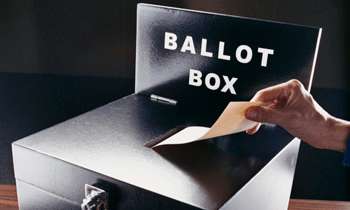

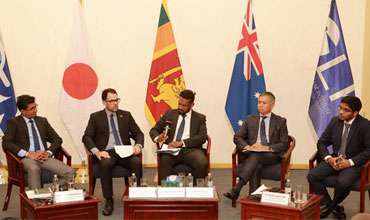
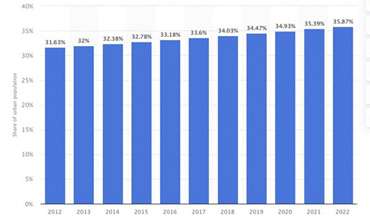
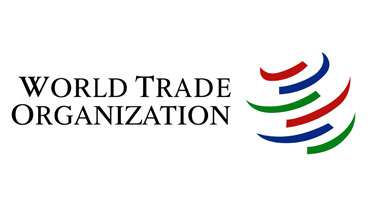
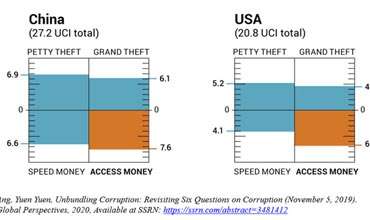
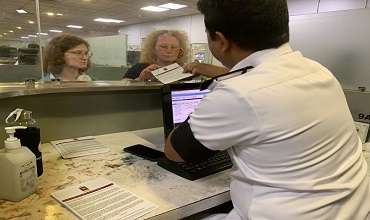




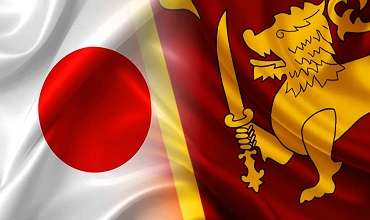
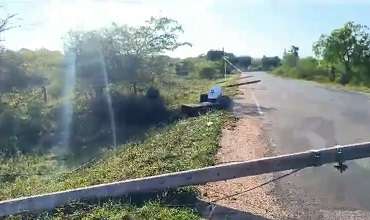

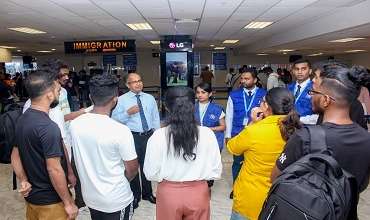
Leave Comments